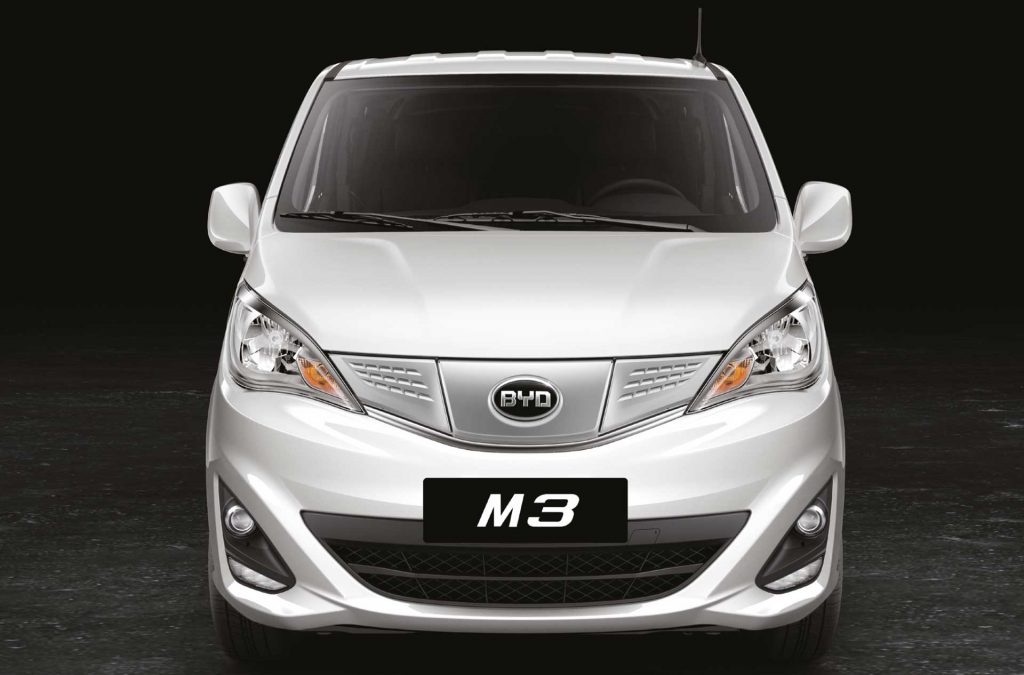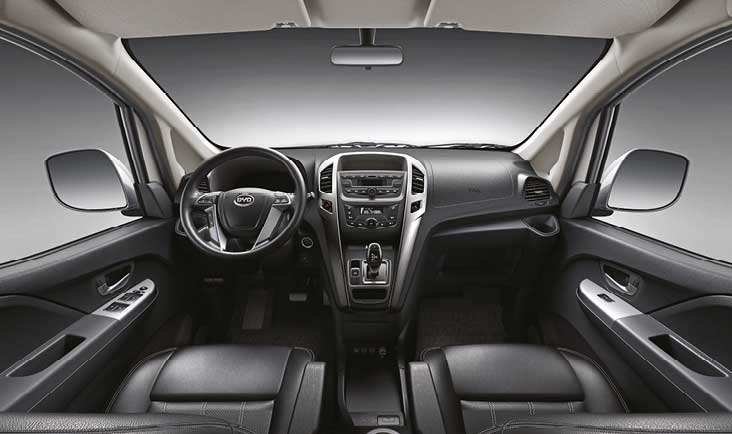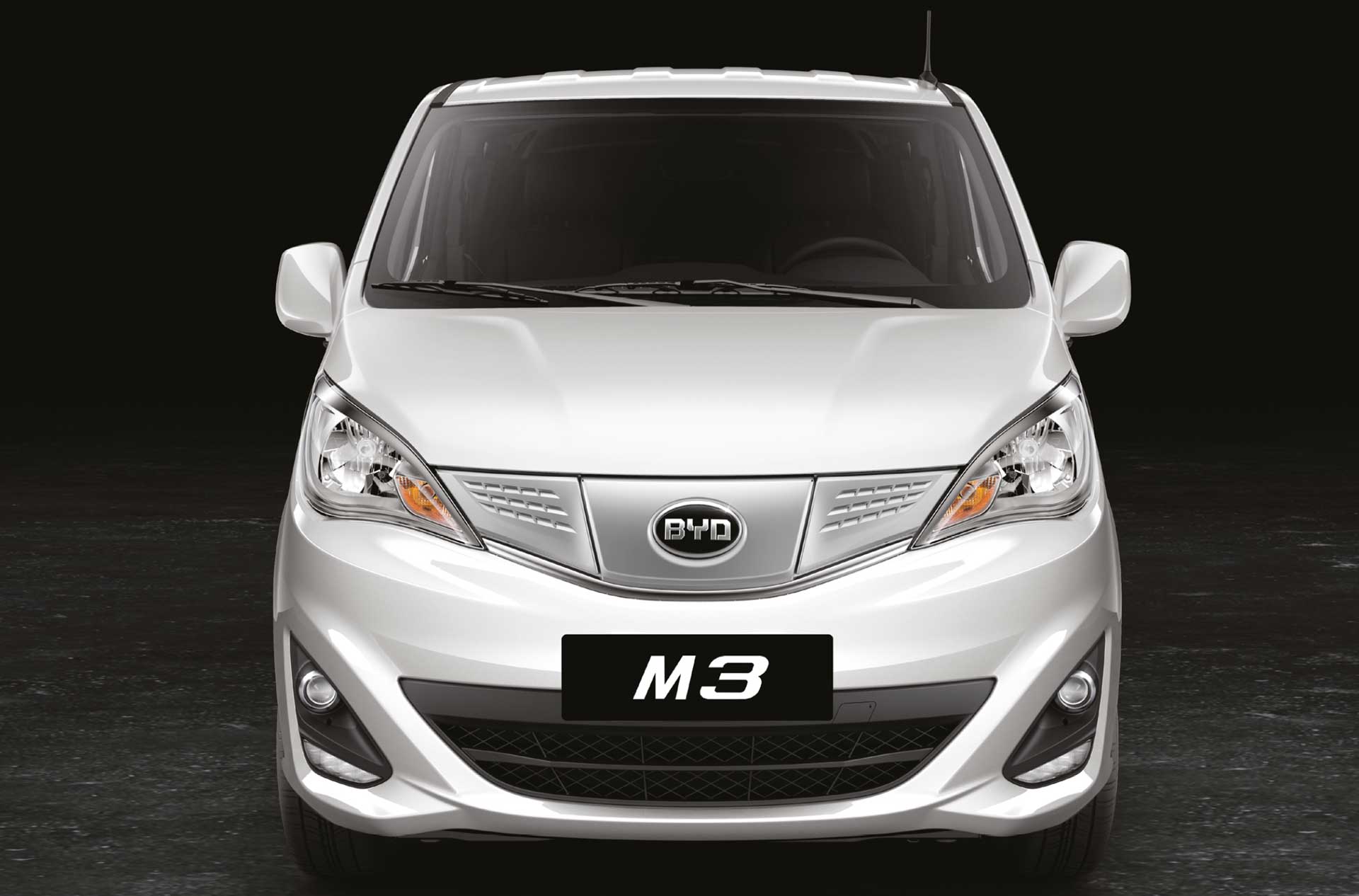BYD M3e
FOR THE NO-FRILLS BUYER
Mat Ranasinghe has some bumpy electric dreams after driving an MPV by BYD
We introduced Chinese company BYD (Build Your Dreams) to readers in the April edition as the world’s largest electric vehicle manufacturer – this was when we reviewed its second generation e6. The M3e in stark contrast is a seven seater MPV that has its roots in something a little more familiar – the Nissan NV200 van.
BYD also has another variant – the T3 – which is a cargo carrier sans the second and third row seats, and with its windows replaced by metal panels. We will briefly cover this too as its running gear is almost identical.
The M3e is an all-electric MPV with a body that’s more or less the length of a modern saloon at 4.46 metres. Being based on a van, it’s quite tall and narrow, which leads to its disproportionate appearance.
Compared to other current van-based MPVs such as Toyota’s Noah or Vellfire, it suddenly looks so ‘last century.’ But let’s keep in mind that budget is a key driver in markets such as ours and once you move past its forgettable looks, basic equipment and mediocre build quality, you may see its positives.

Considering where fossil fuel prices are heading, plus the fact that fully electric seems to be where the global vehicle industry is pointing, the M3e and its sibling T3 suddenly make a whole lot of sense.
Don’t forget that being EVs, they have fewer mechanical components to wear out and require fewer fluids and filters, which would mean lower operating and maintenance costs in the long run.
Step into the cabin and you’ll find the M3e and T3 share the same dated dashboard and van-like driving position featuring an almost horizontal steering wheel. The seats are comfy enough and superior to those found in mini-vans like Suzuki’s Every. But virtually every surface is covered in hard, scratchy, cheap plastics.
The driver’s instruments include a speedometer on the left and a kW meter on the right with a vehicle information display in-between. The central stack to the left of the driver contains the basic audio system, air conditioning controls and a gear selector we’d swear looks stolen from a famous German manufacturer.
In the second row (which is cargo space on the T3), the M3e has two rather plush looking captain’s chairs. We say ‘looking’ because they don’t have built-in footrests or throne-like comforts. What they do provide is easy egress to the third row from between them. The last row is a regular three seater bench on which occupants sit intimately rubbing shoulders. There isn’t a whole lot of luggage space behind an occupied third row.
In terms of bundled technology, we’d ask what tech is there apart from an electric drivetrain and associated battery pack?
The M3e allows both AC and DC fast charging, meaning you could slow charge overnight at home or do a quick charge while having a meal if you’re running low on juice while on a journey. A full charge will return a good 300 kilometres so it’s unlikely to run out of juice mid-journey.

Unsurprisingly, during our test drive, we discovered the ride quality was rather bouncy.
The M3e and T3 sit on leaf springs at the rear, which are known to perform better with loads applied to them. That boils down to comfort levels being dictated by passengers or cargo onboard. We figured it will make suitable office transport, which would carry close to its capacity most of the time. The M3e behaved rather van-like on our city drive.
A point to note is that it didn’t feel zippy during start-stop urban driving unlike with most EVs, which have high torque motors. This could be due to the almost 1.8 tonne unladen weight it has to carry. The zero to 100 kmph dash took a lazy 18 seconds – long enough to have a power nap. A full charge cost us about US$ 12, which is less than half of what it would cost in a fossil fuel burning vehicle.
We’d recommend it for the no-frills buyer in Sri Lanka – one who would go for budget and economy over all other considerations and perhaps runs a school or staff van service. In its T3 guise, it would make an ideal inner city cargo hauler, possibly delivering in areas with restricted streets and/or parking.
BYD M3e AT A GLANCE

MODEL
A compact van-based seven seater budget electric MPV (also sold as the T3 cargo van) from Chinese manufacturer BYD. Both return around 300 kilometres on a single charge.
Icons made by Nikita Golubev from www.flaticon.com

ENGINE
AC permanent magnet synchronous motor. AC or DC charging for the 50.3 kWh battery.
Icons made by monkik from www.flaticon.com


POWER
Single power train choice, 70 kW (94 bhp) and 180 Nm of torque, similar to the output of the BYD e6.
Icons made by Becris from www.flaticon.com

TRANSMISSIONS
Single speed automatic with dash mounted gear selector copied from BMW.
Icons made by Freepik from www.flaticon.com


VERDICT
It should be priced competitively at the budget end of the EV market. Around 300 kilometres on a charge while carrying seven adults plus a limited amount of luggage (or two adults and a whole lot of cargo). It’s a winner considering its purpose in life is that of a workhorse!
Icons made by Freepik from www.flaticon.com


